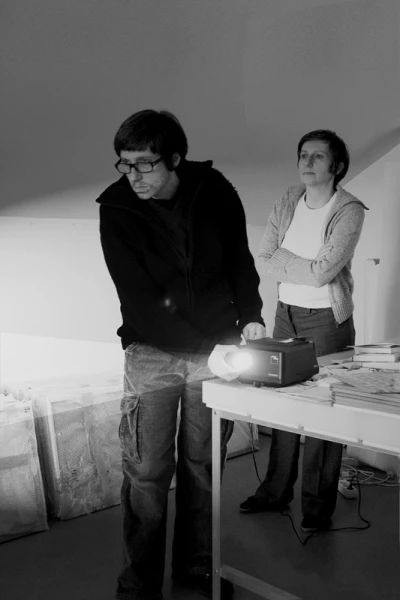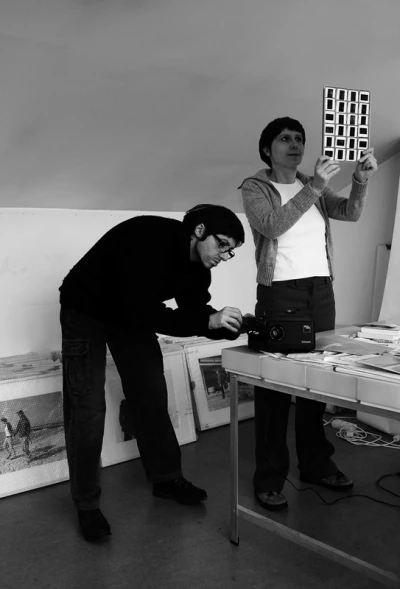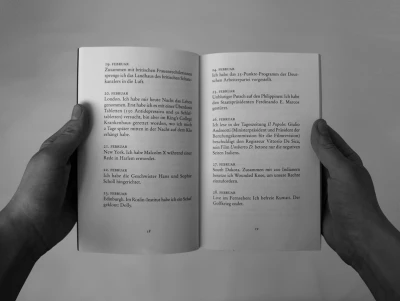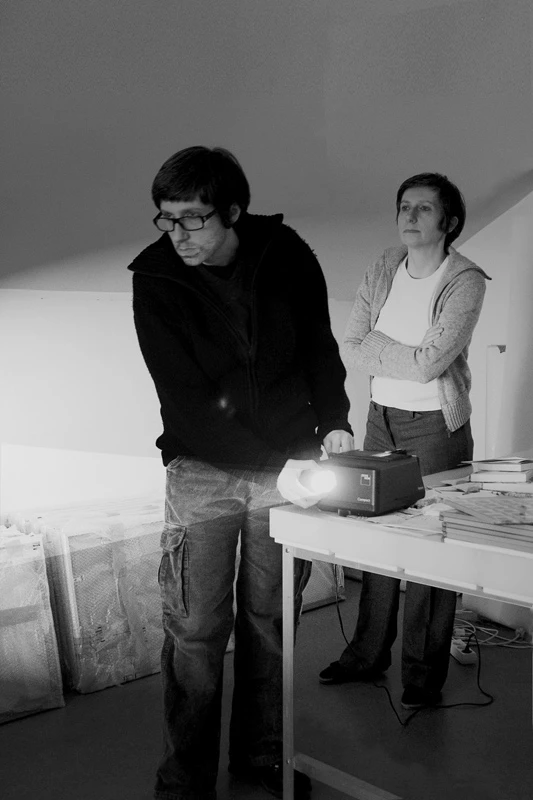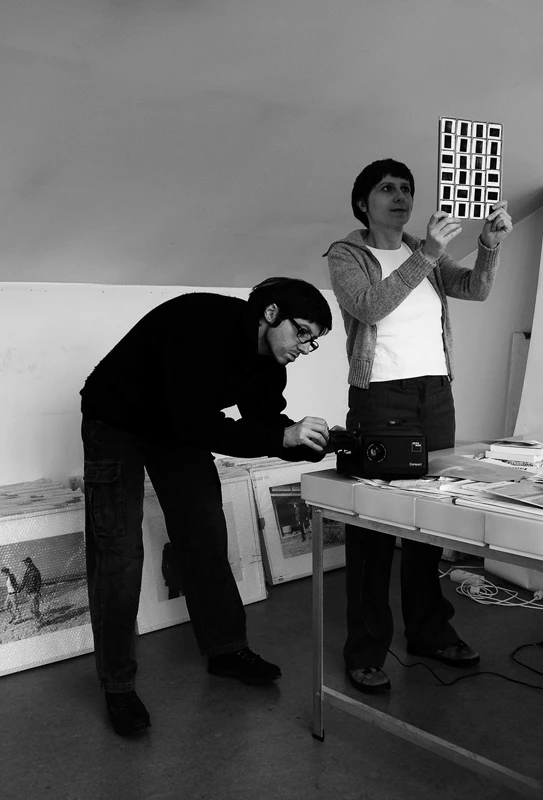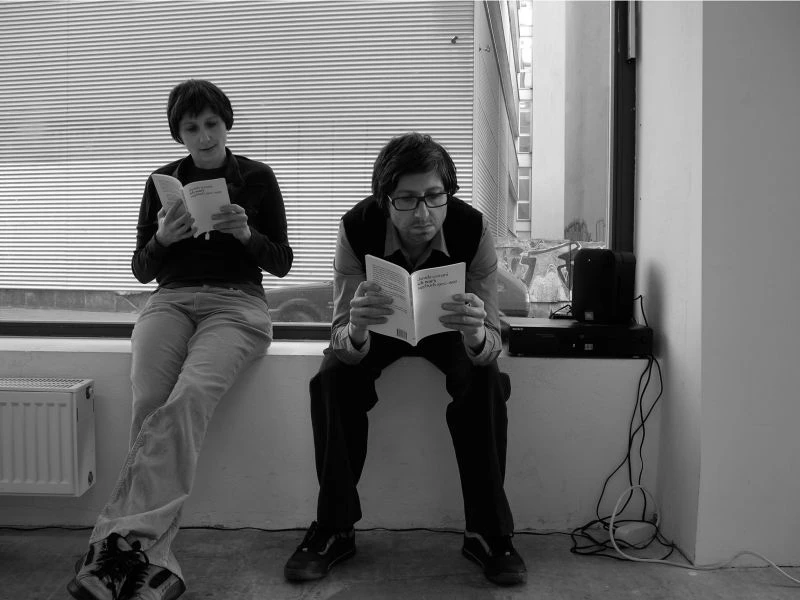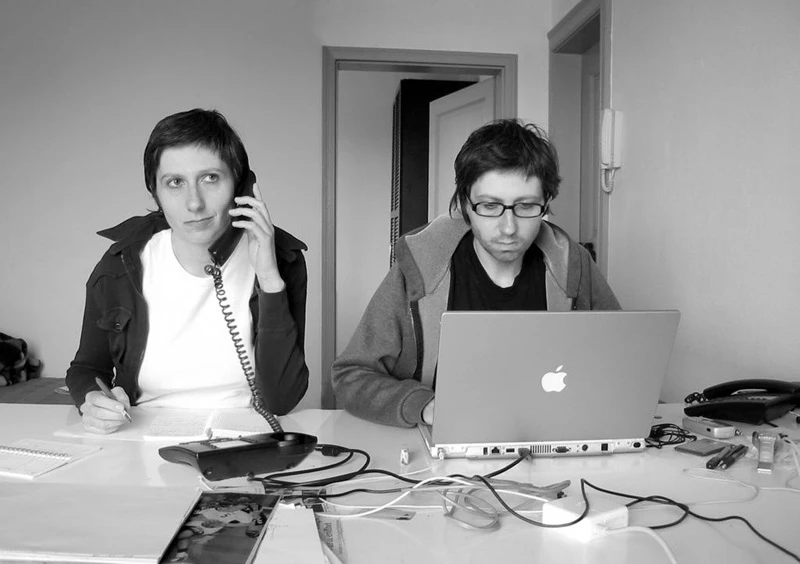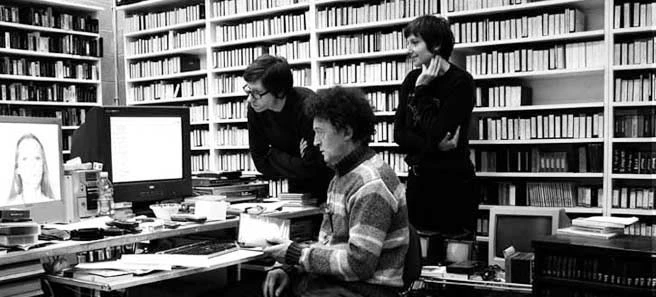Daniela Comani • Book launch - Comanicasino
CURATED BY
Angela Madesani
22.09.2006
Presentation of the publication by Daniela Comani, with a text by Angela Madesani, published by Revolver-Archiv für aktuelle Kunst, Frankfurt am Main, 2006
Testo critico
From the Particular to the Multiple
Notes on the work of Daniela Comani, by Angela Madesani
(excerpt from: Comanicasino, Revolver-Archiv für aktuelle Kunst, Frankfurt am Main, 2006)
If it were possible to observe Daniela Comani’s work with an overall glance, through a very wide-angle lens, one could discern threads, narratives that develop over time with coherence, but also with a kind of positive obsession.
One of the threads that can be followed is that of the indefinability of the surrounding world. In DoubleDrawings (1995-2005), very simple drawings on tracing paper, the image is not immediately readable. Several images, in fact, overlap. Reading is thus made more complex: the reference to thought, to the multiple facets of existence, is obvious.
In a 1994 video Mosca-Tokyo, the images of the Trans-Siberian route, which Comani traveled, are superimposed on those of crowds of people moving quickly through the streets of Moscow.
Reality is not immediately readable; it requires attention, discernment. The time normally devoted to understanding things is too little, and pauses for reflection increasingly scarce. As if there were no time for boredom, for gazes, for stops. There is a tendency towards simplification, to reduction without any problem: so everything becomes faster, under the banner of functionalism and practicality.
Confusion and difficulty in interpretation are also present in Comunicazione vs estraniamento (1993), in which some people read texts in a language different from their own. At first glance, nothing is understood. With more attention, the nature of the operation can then be grasped. Traces, fragments that make the whole deeply disorienting. It is not possible to catch the nuances, nor the meaning of what is read. What might appear as a dialogical dimension is in fact not. No one manages to communicate or understand. The world, that of 1993 but also today’s, Western society increasingly marked by the arrival of new cultures, new ways of seeing, actually communicates very little: Iraq docet.
Few make the effort to understand, oppressed by a stupid triviality through which they try — do we try? — to defend their own little patch of land.
To define Daniela Comani’s work as socially based in light of all this seems limiting to me. There is something different, deeper that touches the submerged chords of the personal, the particular. It is not about intimism, but rather points from which broader reflections depart. From the micro to the macrocosm.
Her works emphasize multiplicity, the possible pluralism of what surrounds us daily. Thus underlining the excesses of communication, of information, where too much tends to erase precision and the essence of things. There is no truth, rather many truths that we must consider. Comani, in this sense, examines the logic of the television system.
In Palinsesto (1997), there is an implacable overlapping of data, news, information. The same principle is also present in later works where typologies, possible classifications are collected: women in Printed Women (2000), Japanese women in Printed Women #2 and in Office Ladies (2001-02), happy men in Happy men (1998-99). With other images, she created puzzles: Gioca anche tu! (1999). To read them in their entirety, to try to grasp their meaning, a certain slowness of approach is desirable, requiring thought, reasoning. When she placed the puzzles in exhibitions, the public had to try to assemble them, studying and reflecting. The “look and forget” works, created with the logic of gimmickry, consumerist ephemera, are banned.
A primary iconographic source for Daniela Comani is the press, from which she draws images of every kind and type. Thus she achieves the depersonalization typical of the concept of multiplicity, which she also brings into her drawings.
For some years now, she has been working on the complex theme of difficult reading, the impaired interpretation of things, the ontological and existential double in Un matrimonio felice (2003-05). These are photographic images of the usual married couple, captured at different moments in life. But the spouses have a strange, unsettling similarity. They are, in fact, the artist herself, playing both the male and female roles. However, one should not think of something caricatural, like provincial cross-dressing, but rather a search within her own world, without added elements, on her own identity. The reflection concerns the relationship that each of us has with ourselves every day of our lives.
Through the banal reproduction of the masculine-feminine cliché, of the couple, Comani probes deeply into the social and individual. Also autobiographical is Sono stata io. Diario 1900–1999 (2002). A kind of calendar in which Comani personally testifies to three hundred sixty-five different days, occurring in different years. She does so as if these things happened to her, as if from time to time she were Hirohito, Hitler, or Einstein. It is history seen through the filter of the self.
We are history. Both makers and victims at the same time. Even great events pass through the individual who offers his contribution and interpretation of the facts. Truth as such does not exist. Our existence, our world, is marked by doubt, the ontological principle of reality.
